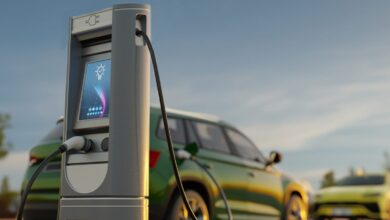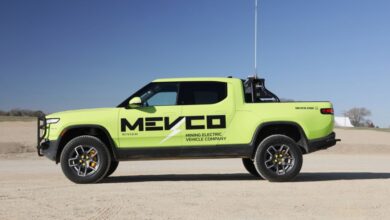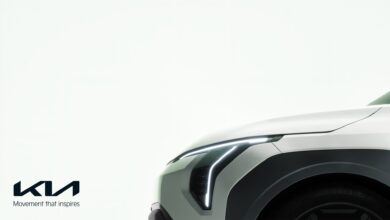Goleta School District Trades In Diesel Buses for 2 New Electric Vehicles | Local News
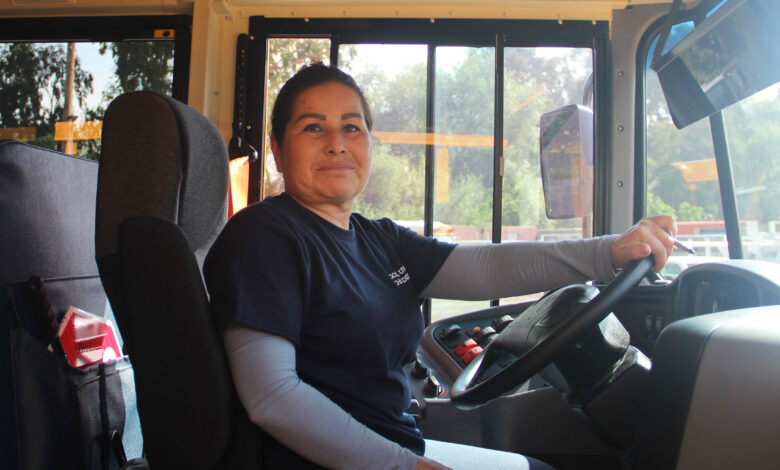
The Goleta Union School District’s transportation team gasped in excitement as one of two freshly inaugurated school buses rolled in from its first time transporting students last week.
But it wasn’t making the low rumbles or pneumatic hissing of a diesel-burning bus, like the 20 others stationed in the district lot.
The faint sound of gravel crackling under the vehicle’s tires and a barely audible, whirring hum were washed out by the boisterous group cheering as the bus looped the lot and backed into a parking spot.
“Electric Powered” stamped in blue on its front bumper: not your average school bus.
“I just can’t believe how quiet the buses are,” exclaimed Lupe Medrano, the driver who had just returned from dropping off students on April 17. “The kids loved it.”
GUSD is jumping on the electric vehicle wave as California orders the phase-out of diesel trucks. Last year, Gov. Gavin Newsom signed legislation mandating that all newly purchased school buses be zero-emission, starting in 2035.
“We’re trying to get ahead of the curve,” said Shawn Dahlen, the district’s director of maintenance, operations and transportation, who is spearheading the electric bus project.
“We currently possess two, and I have another two in application.”
But it took a long four years just to get the first batch of buses.
Dahlen had already applied for eight funding grants for electric buses when he finally secured one in August 2022 through a state school bus set-aside program.
The manufacturer’s software issues pushed the delivery date back an entire year to earlier this month, he said.
It was worth the wait for Dahlen and the rest of his department, who climbed into the parked bus to see if it has “the new car smell.” The verdict was yes, it does.
“It’s nice for Earth Day, to have this in the same month,” said Emily Zacarias, a Goleta Union School District trustee who was joined by her two daughters to see the bus’ arrival.
“It’s a feel-good thing.”
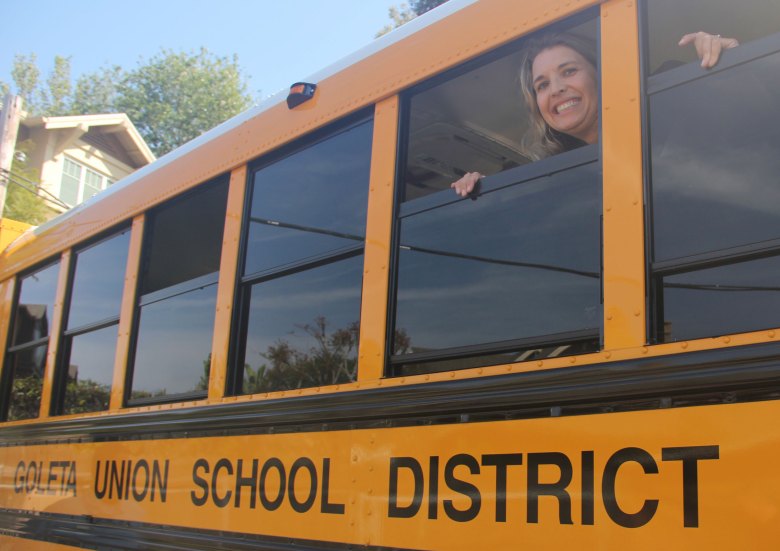
The grant — funded by California’s clean air incentives — works as a one-for-one deal. The Goleta district received $775,000 from trading in diesel buses to put toward the electric buses, which cost $380,000 apiece: almost double the cost of their petroleum-fueled predecessors.
“Two old buses give us money for new clean energy buses,” said Dahlen, who considers GUSD the perfect candidate for introducing electric vehicles. “It was 97% paid for.
“We’re the ideal school district for electric buses,” he continued, motioning to the surrounding, mostly flat landscape. “We have no big hills and our longest route of the day is about 60 miles.”
No need for air conditioning on Goleta’s coastal plain will further maximize their electrical efficiency.
The buses can go around 100 miles on a full battery, which lasts for up to 3,000 rounds of charging, Dahlen estimated.
He had a long cable and four low-level, 19.2 kilowatt chargers — just like those used for everyday EVs — installed into the district yard for the buses.
Supported by the pre-existing power grid, however, the stations can only support four electric buses.
“Any further updates would involve Edison,” Dahlen said, explaining that such an undertaking would send the operation’s total price tag skyrocketing.
The 47- and 52-passenger electric buses will carry significantly fewer students than the diesel buses, which can seat up to 82 of the district’s K-6 students.
But otherwise, they look virtually the same as any other school bus.
Their implementation is expected to cut expenses, according to Dahlen.
“Everyone says it’s comparable with low operating costs,” he said, estimating a 30% price reduction in the long term, looking at the difference in spending on fossil fuels versus clean energy.
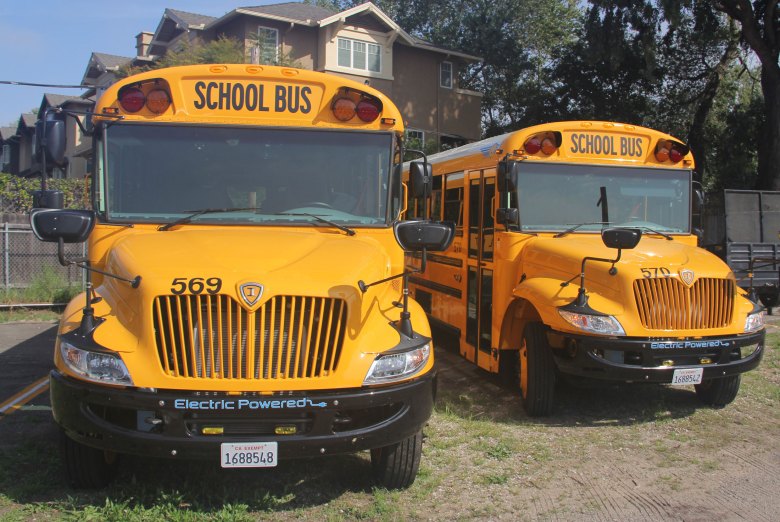
Getting on the Road
The shift to electric from diesel will be relatively simple for bus drivers.
Besides a few technological updates, operating the vehicle is fundamentally the same, just like a car driver’s switch to an EV: smoother, quieter and more modern.
“Driving the electric bus is very similar to driving diesel buses,” said Ben Hazen, the district’s transportation supervisor. He’s responsible for making sure the drivers are ready to hit the roads.
“As a trainer, I get in and learn the vehicle with all the stuff the manufacturer has given us on how to operate it,” he explained. “I train all of the drivers on the differences between this and diesel.”
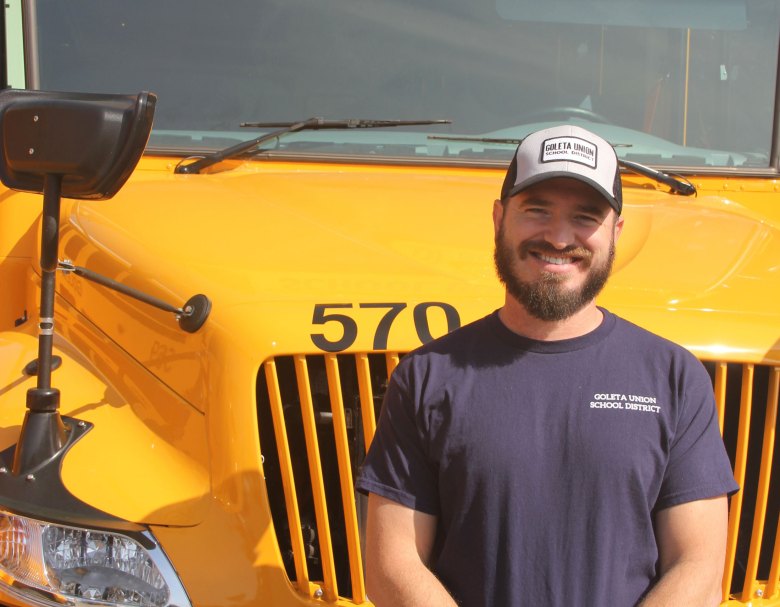
But mechanics servicing the new electric buses face the real learning curve.
“A lot of our skill sets today come from turning wrenches, not keyboards,” said Dahlen, noting that the familiar combustion engines are now completely absent, replaced by a foreign battery-operated system.
“There will be a little catch up there.”
The district is aiding the transition by putting mechanics through rounds of training on learning the buses’ inner workings, and sticking with a single manufacturer for consistency.
“If we can standardize and stay brand-specific, that’ll make it easier,” he said.
Both of the new buses officially started their routes on April 15 and, from now on, will be running daily.
The second pair of electric buses should arrive within the next 10 months, and will take the place of two more diesel buses, according to the district.
